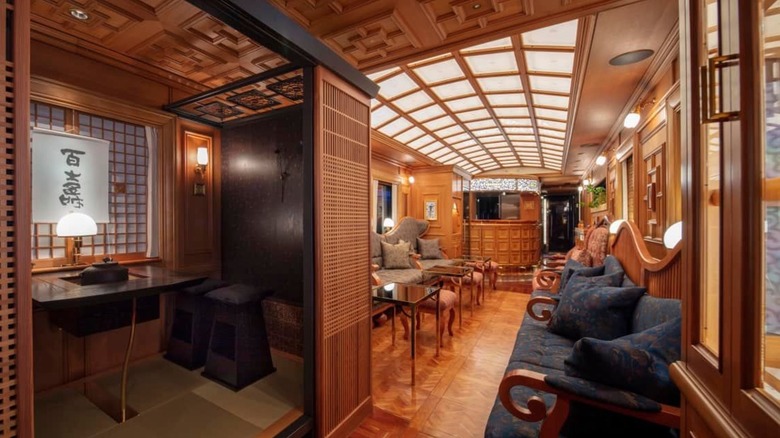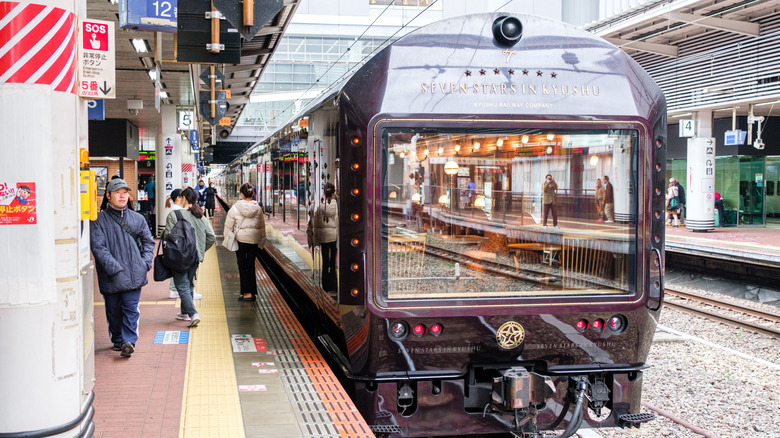Japan's One-Of-A-Kind Luxury Sleeper Train Offers Panoramic Windows And Lavish Lounges
Since the Orient Express first welcomed posh passengers in the late-1800s, luxury trains have been synonymous with romance and class, making train travel look downright glamorous. If a luxurious sleeper ride is on your bucket list, Japan's Seven Stars luxury train offers elegance and fine touches that make gliding through the southern island of Kyushu unforgettable. With rich wood tones, plush furnishings, and panoramic windows all around, Seven Stars is one of the most legendary ways to explore Japan.
The train's name represents the seven prefectures of Kyushu Island and its seven main attractions. The train also has seven cars, including the "Blue Moon" piano lounge, the "Jupiter" social salon with traditional tea room, a bar car with curated gallery shop, and four additional cars with lavish suites. The last car also has a completely wall-to-wall window, perfect for taking in the stunning views along the journey.
The two-day and four-day itineraries take passengers through historic towns, natural hot springs, and UNESCO World Heritage Sites — all in impeccable style. Excursions are included in the ticket price, so travelers can step off and explore the island throughout the journey. With its artisanal elegance and exclusivity, traveling on the Seven Stars in Kyushu is a once-in-a-lifetime experience.
Planning your luxury train experience on Japan's Seven Stars
The Seven Stars in Kyushu is an ultra-exclusive journey — you actually have to apply to be considered for the trip. If you're one of the chosen ones, you can buy tickets starting anywhere from $4,300 to $7,600 per person. This experience is ideal for solo travelers (check out tips for a successful solo train trip) or couples, as the application limits you to a max of two rooms.
There are only 10 suites, each suitable for two guests. Each room has a shower, toilet, air conditioning, and a range of amenities (but don't forget these must-pack items for your train trip). Artisans practicing traditional woodcrafts, pottery-making, and hand-painting porcelain all contributed to the train's meticulous design. There aren't TVs onboard because the real entertainment is the experience and views. Passengers have access to Wi-Fi, but it might be spotty during certain legs of the journey.
The train fare covers excursions, meals, and drinks (except for some alcohol, such as vintage wine selections), but passengers can purchase additional services with a credit card. Dining is chef-driven, with curated menus using seasonal ingredients from local farms. You'll find a blend of Japanese, French, and Italian influences in meals tailored for each itinerary. The dress code isn't as swanky as you'd imagine — smart casual is fine, and comfy clothes and shoes are recommended for island exploring. Itineraries are subject to change, but an example two-day journey includes stops along the Wakimoto coast and Saiki. A four-day journey could take you through cultural destinations such as Hita, Onta (a traditional pottery village), the Nishimoro area, and the Fuko-ji Temple. There's really no better way to explore Japan's third largest island, Kyushu, a haven of hot springs and exquisite food.

